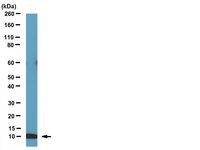Systems analysis of the prostate tumor suppressor NKX3.1 supports roles in DNA repair and luminal cell differentiation.
Yang, CC; Chung, A; Ku, CY; Brill, LM; Williams, R; Wolf, DA
F1000Research
3
115
2014
Pokaż streszczenie
NKX3.1 is a homeobox transcription factor whose function as a prostate tumor suppressor remains insufficiently understood because neither the transcriptional program governed by NKX3.1, nor its interacting proteins have been fully revealed. Using affinity purification and mass spectrometry, we have established an extensive NKX3.1 interactome which contains the DNA repair proteins Ku70, Ku80, and PARP, thus providing a molecular underpinning to previous reports implicating NKX3.1 in DNA repair. Transcriptomic profiling of NKX3.1-negative prostate epithelial cells acutely expressing NKX3.1 revealed a rapid and complex response that is a near mirror image of the gene expression signature of human prostatic intraepithelial neoplasia (PIN). Pathway and network analyses suggested that NKX3.1 actuates a cellular reprogramming toward luminal cell differentiation characterized by suppression of pro-oncogenic c-MYC and interferon-STAT signaling and activation of tumor suppressor pathways. Consistently, ectopic expression of NKX3.1 conferred a growth arrest depending on TNFα and JNK signaling. We propose that the tumor suppressor function of NKX3.1 entails a transcriptional program that maintains the differentiation state of secretory luminal cells and that disruption of NKX3.1 contributes to prostate tumorigenesis by permitting luminal cell de-differentiation potentially augmented by defects in DNA repair. | 25177484
 |









